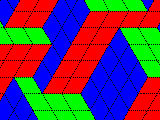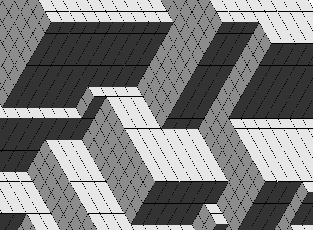

Joel Shore and I started by asking why the regular Ising model didn't have barriers to relaxation. Since all the bonds agreed on what to do, we saw that relaxation to the ground state was all ``downhill''. We also realized that an antiferromagnetic next--neighbor bond, no matter how weak, would lead to competition and barriers. To shrink a cube of size L by one layer involved crossing a barrier which grew linearly with L! While this effect disappeared near the critical temperature (so we didn't have a glass transition), it dominated the dynamics at low temperatures (below the ``corner rounding transition'') whenever the system was trying to phase separate: glassy coarsening dynamics. While Joel and I were not the first to identify logarithmic growth of domains in a model, all our predecessors turned out to be wrong. (Not to worry: our arguments are much simpler and our numerics much more compelling.) The smallest of changes in the best studied model in statistical mechanics leads to a dramatic changes in behavior.
Animations of the coarsening process at short times, and at longer times.
![]() James P. Sethna, sethna@lassp.cornell.edu
James P. Sethna, sethna@lassp.cornell.edu
![]() Statistical Mechanics: Entropy, Order Parameters, and Complexity,
now available at
Oxford University Press
(USA,
Europe).
Statistical Mechanics: Entropy, Order Parameters, and Complexity,
now available at
Oxford University Press
(USA,
Europe).